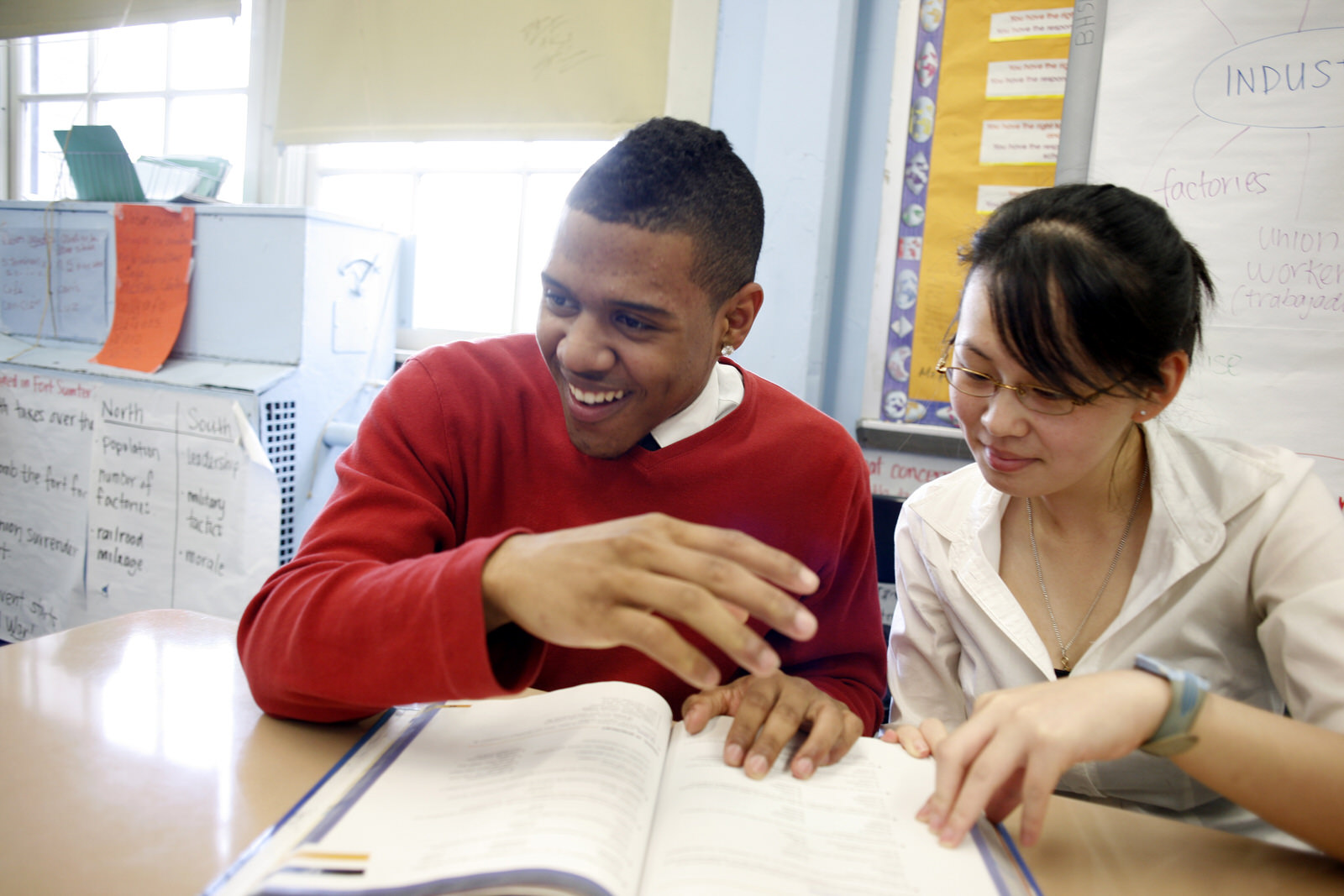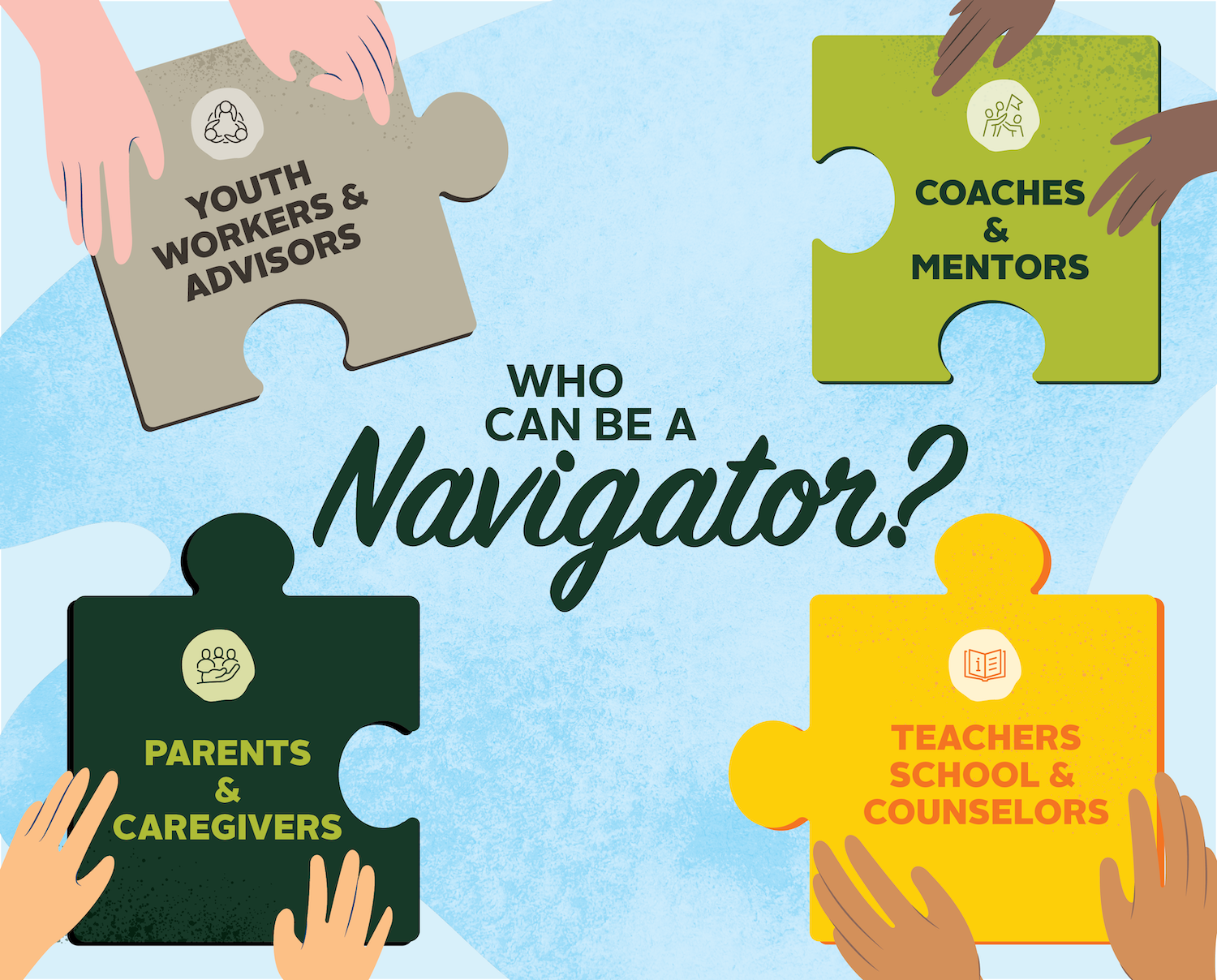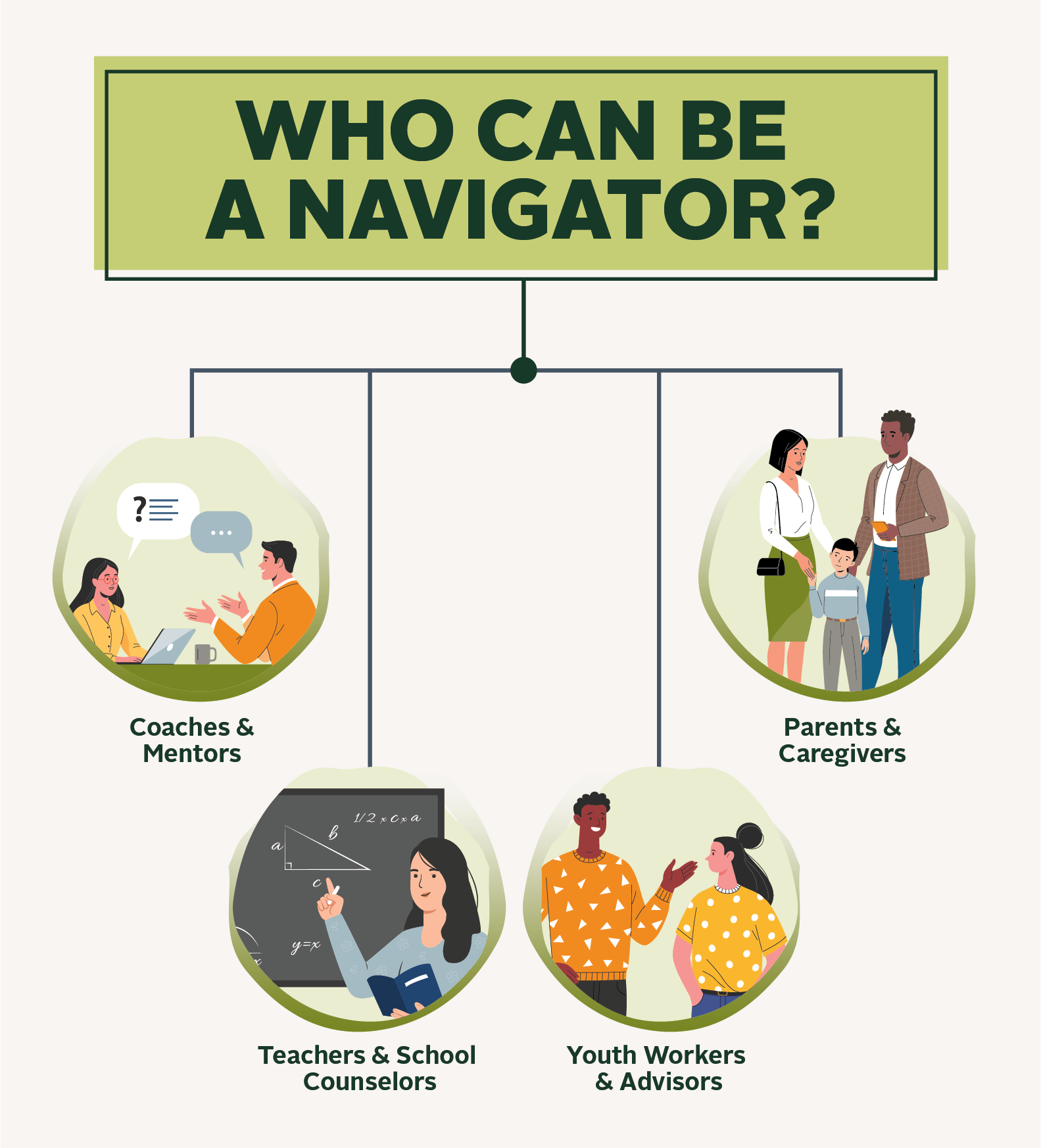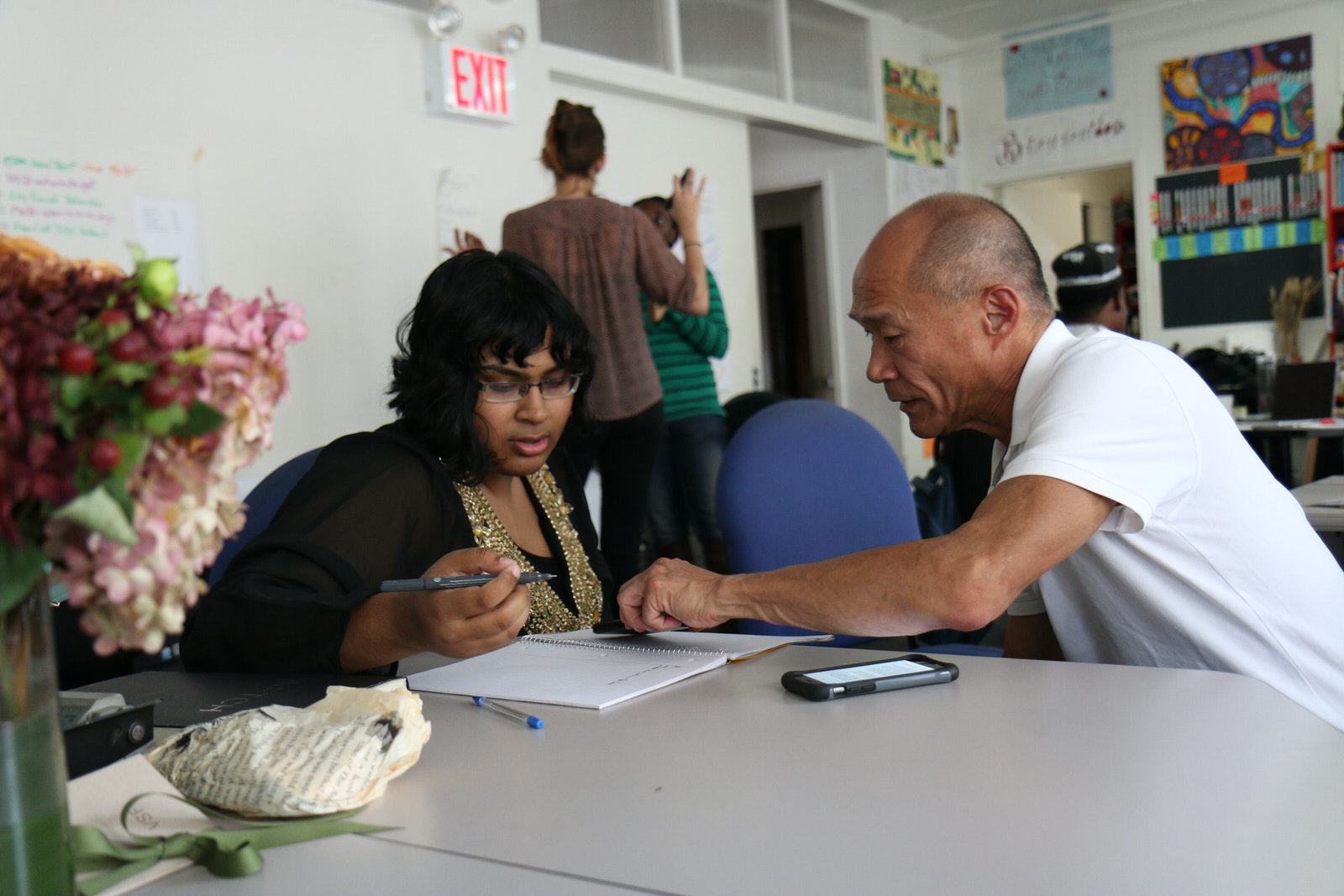Who can be a navigator? What are the navigator’s roles?
To plan effectively for both college and careers, all young people will need help navigating the process. This guide is a resource for “navigators” — the teachers, counselors, advisors, youth workers, family members, mentors, and other advocates who guide youth through the twists and turns on the road to becoming college and career ready. Whether playing a formal or informal role, these college and career readiness navigators are critical to helping young people map out the journeys toward the futures they want for themselves.
A college and career readiness navigator’s essential responsibility is to guide and support youth as they: 1) explore options and plan for potential career choices and opportunities and 2) develop the knowledge, skills, and abilities to succeed in their chosen postsecondary paths.
How does this guide support navigators?
While there are many websites and resources that provide students with college and career information, most focus on achieving short-term success — college admission or finding work — rather than the critical connections between college and career readiness.
This guide is different. It highlights what navigators can do to nurture the critical connections young people must make between college and career readiness. Planning for future success requires an integrated approach that helps students understand their education and career options and what they must do to become prepared. This guide identifies action steps that young people can take to achieve their college and career goals. The knowledge and skills outlined in it are specific and teachable.
The guide is divided into three sections, each of which corresponds to one of the three areas of the framework: college readiness; career readiness; and college and career readiness. Simple concept maps and readiness charts help navigators understand the skills and knowledge students need to attain in each area and help them communicate with students about the ways in which career and college planning should be jointly addressed.
Concept Maps
Concept maps, which are found at the start of each readiness section, provide detailed outlines for each area of readiness in the college and career readiness framework.
These maps illustrate the key components within a given area of college and career readiness as well as the elements required to attain skills and knowledge in that component
Component
College Planning and Preparation
Readiness Charts
Readiness charts, organized in three columns, help navigators: suggest what students can do to acquire the specific knowledge and skills needed to achieve readiness in each area of the framework; identify how they can help students build readiness in each area; and determine whether young people have demonstrated specific knowledge and skills. The charts highlight multiple examples, but they are not intended to be exhaustive lists. There is some intentional repetition from one chart to another. This repetition reflects the recursive nature of the college and career readiness process and emphasizes the need to expose students to a few essential actions or benchmarks at multiple points in time.
FHI 360 also recognizes that no single person can implement or manage all of the suggestions presented in this guide. The recommendations for what navigators can do are meant to spark ideas and planning; they are not intended to outline the expectations for all navigators. Some students may work with the same navigators throughout four years of high school, but most will need to work with multiple navigators to attain college and career readiness.
Why is it important for students to have an integrated education and career plan?
To help both students and navigators map and track the college and readiness journey, FHI 360 strongly recommends the use of our education and career plan (ECP) that integrates college and career readiness preparation in a single document. The plan should be updated regularly to reflect accomplishments and changing goals. Ideally, this is done during meetings between young people and navigators. However young people may do this on their own or with the help of parents or guardians. If a navigator is working with a young person over several years, a copy of the ECP should be kept by both.
The ECP:
- Identifies a student’s career interests and goals and incorporate the qualifications, education, and training requirements for the identified careers.
- Connects a student’s career goals with the specific qualifications, education, and training required for entry into those careers.
- Outlines a student’s four-year course plan for high school that aligns with graduation requirements as well as the student’s postsecondary education and career goals.
- Provides an integrated record of progress in college and career planning that shows activities and accomplishments in both areas.
The process of creating ECPs will help young people identify the steps needed to move from where they are to where they want to be. In addition, students can revise their ECPs as their goals, interests, and circumstances change. If a young person works with different navigators over time, the ECP can provide documentation of what has been accomplished in each area to date. By developing and refining their ECPs, young people can track their progress toward acquiring the knowledge, skills, qualifications, and experiences needed to achieve their college and career goals. An example of an ECP is included here.
Conclusion
The current and future labor market landscape requires workers who can continually learn and develop new knowledge and skills to keep up with the demands of rapid technology innovation and globalization. Postsecondary education and careers are intrinsically connected, and many adults move between learning and applying what they learn throughout their careers.
The goal of college and career readiness is not simply to help young people get into college or get hired for a job. Rather, it is to help them develop the skills, knowledge, and mindsets for ongoing success in postsecondary education and careers. College and career readiness does not result in a single accomplishment or destination. It does not look exactly the same for each person. Rather, the term readiness implies that a person has the enthusiasm, inclination, knowledge, skills, and abilities to thrive in the varying contexts of work and learning.
Education and work define people and give them the opportunities to define themselves. In the integrated work and learning journey, graduation and college and career readiness are not destinations but rather milestones that place students on the path to lifelong success.
The skills young people need to succeed in college and in their careers are specific and teachable. This is the difference great navigators can make; by helping young people explore their options, build their skills, and make concrete plans for postsecondary education and careers, navigators help guide the way to productive futures for all students.
How can you get started?
Download the Tips for Navigators below for advice on how to approach the navigator role as you guide young people through their journeys toward readiness.









